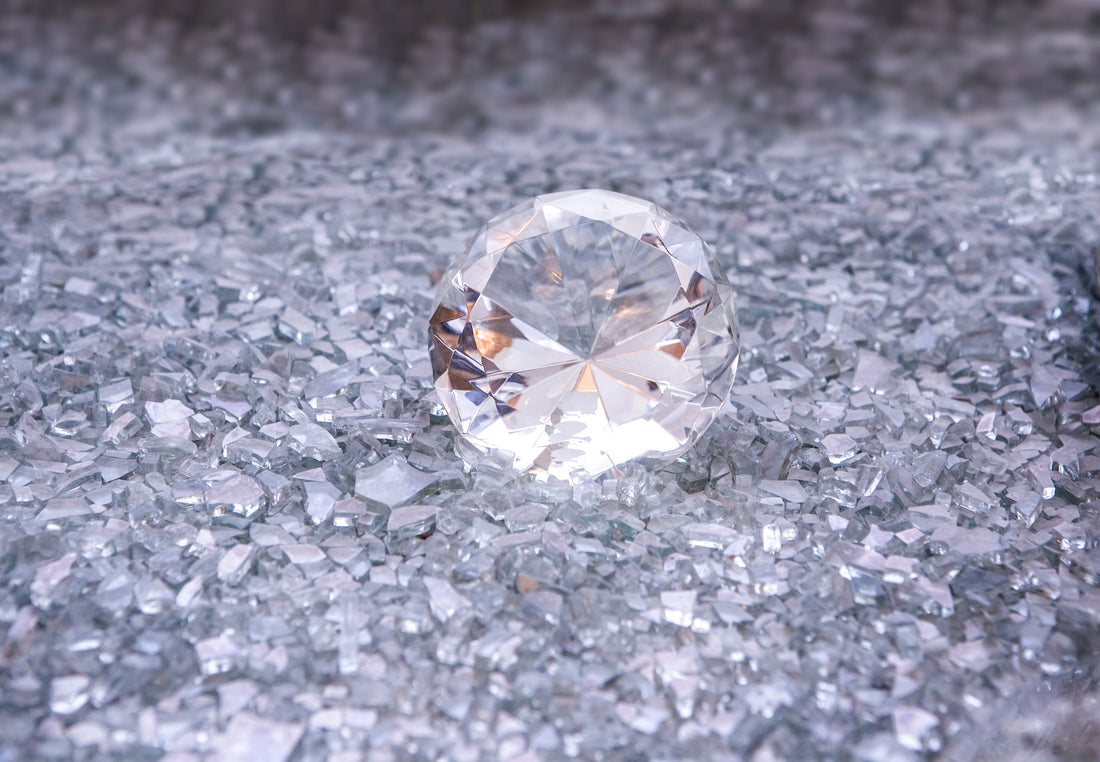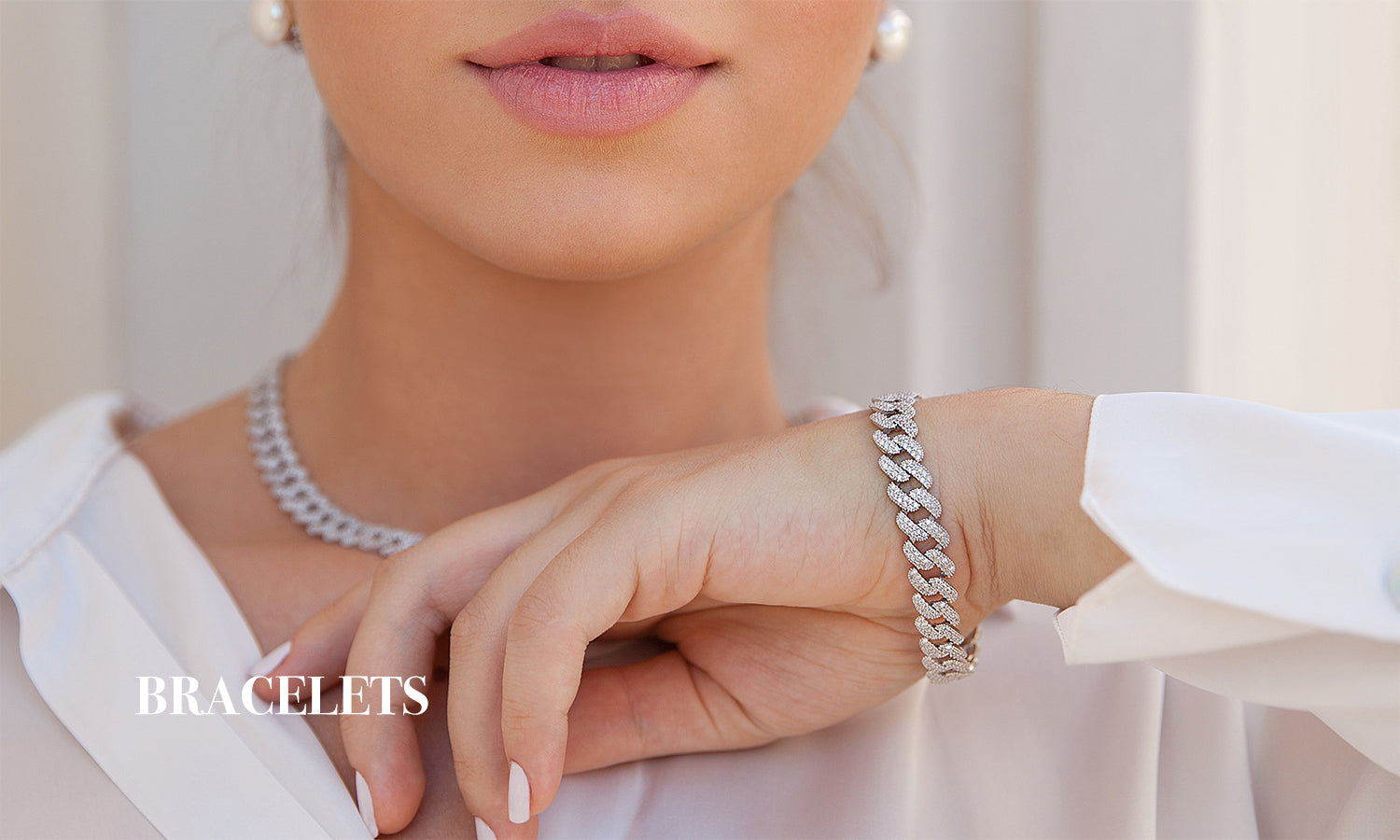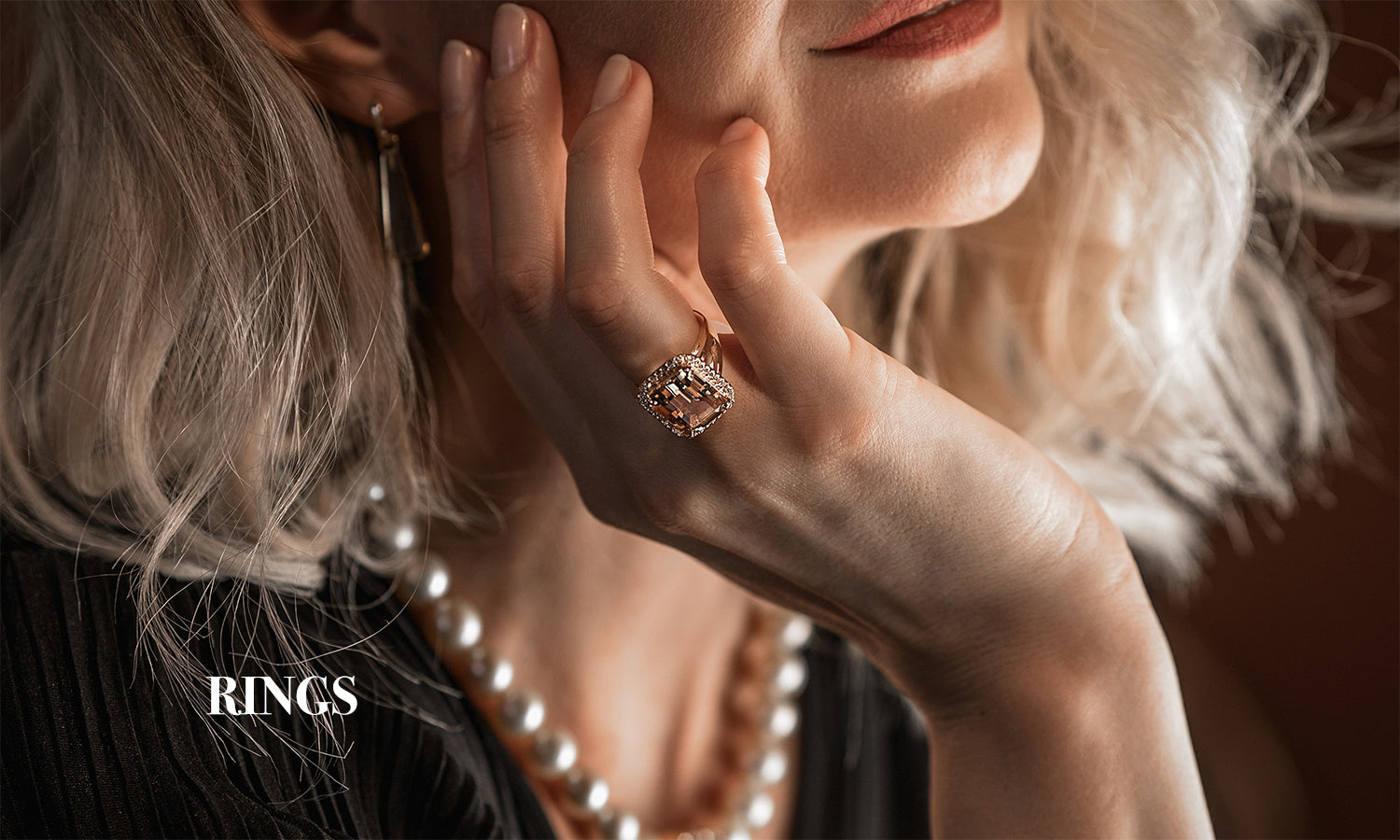
How is moissanite made?
Share
What is moissanite, where does it come from, and how is it made? In this Planderful post, we will try to answer all these questions. Discover this gemstone and how it can be used in jewelry designs as an economical alternative to diamonds. Below, we will tell you everything you need to know about Moissanite.

What is a moissanite stone?
Moissanite is a rare and scarce stone that is generally colorless but emits rainbow-colored sparkles when it catches the sunlight. Because of its rarity, it is now manufactured in laboratories rather than mined, making it a great option for jewelers who want to create their designs in a more ethical and eco-friendly way.
Where does moissanite come from?
Moissanite was discovered in a meteorite crater in Arizona in 1893 when chemist Henri Moissan dug and found the mineral. Because it is so rare in nature, today moissanites are man-made in laboratories and have been perfected to be identical to those found in nature.
The natural moissanite stone is made of silicon carbide (SiC). The stone is named after Henri Moissan, a French scientist who won the 1906 Nobel Prize in Chemistry because he discovered the mineral in 1893 in Arizona's Diablo Canyon. Moissan at first thought it was a diamond until he discovered that it was a material that came from the remains of a meteorite, which is why it cannot be found in nature. Moissanite is also known as stardust.
Moissan was also a pharmacist, chemist, and university professor, and throughout his life, he devoted himself to the study of minerals. He also devised the arc furnace, which made him reach a high temperature of 4100 °C. This furnace allowed him to experiment with elements such as the reduction of minerals to recover metals such as uranium, chromium, wolfram, vanadium, manganese, titanium, and molybdenum. Moissanite in nature is only found in the form of microscopic particles and is usually part of inclusions in diamonds.
In the late 1990s, Moissanite appeared as a gemstone in the jewelry business, creating a great uproar in the industry as it is difficult to identify this stone with a diamond, even for experts. Machines and technological elements may not recognize the difference between a fake diamond and a moissanite. Over time, colored Moissanites have become available that easily mimic cubic zirconia and even some natural colored diamonds. Today, green and blue Moissanites are quite expensive, but dark green, yellow, and cognac Moissanites are more affordably priced, which are similar to cubic zirconia products.

Source: https://www.kristincoffin.com/blogs/news/grey-iconic-moissanite-for-kristin-coffin-jewelry
Synthetic Moissanite, how is it made?
As mentioned above, Moissanite is made from silicon carbide, a material abundant in meteorite debris. For this reason, this mineral is extremely rare on Earth. In addition, naturally occurring moissanite forms very small crystals. Chemists could synthesize silicon carbide, but only in colors and in quite small sizes. Thus, to obtain Moissanites it is necessary to create them artificially in laboratories. So, how is moissanite made? How valuable is the moissanite we use in our jewelry?
A chemist named Lely developed a process that was around in 1955. The Lely process vaporizes and condenses silicon carbide without it passing through a liquid state. At 2500 degrees C it produced large single crystals, but did not control for impurities, so the crystals were not clear. A chemist named Davis came up in 1990 by heating silicon vapor carbide to 2300 degrees C in a vacuum, and then cooling it to 2200 degrees C in argon at low pressure.
Finally, Cree Research, of Durham, North Carolina, improved the process to produce large, clear, single crystals. The scientists developed a new thermal process that creates silicon carbide in the same way it would occur naturally. This new process accelerated the time it takes to produce moissanite, otherwise, it would take hundreds of years to occur naturally and even then would only occur in minuscule amounts. Laboratory-grown silicon carbide crystals require a fraction of the time to create and become ready-to-sell gemstones.
In 1995, Cree Research, the company specializing in semiconductors and LEDs, was formed Charles and Colvard Jewelers in Morrisville, North Carolina. Charles & Colvard began producing the crystals and marketing them as Moissanite jewelry. Together they hold the patent for moissanite and are the exclusive producer and distributor worldwide.
What are the properties of moissanite?
If we compare the properties of moissanite with other gemstones such as diamond, sapphire, and ruby, they are similar in terms of hardness and brilliance. However, what makes moissanite stand out from the rest is its position in the refractive index of brilliance at approximately 2.65 - 2.69.
Moissanite is one of the hardest gemstones, except diamonds. Moissanite scores a 9.25 on the Mohs hardness scale, which makes it excellent for everyday use, as it is less prone to scratches and scuffs, unlike other softer stones such as opal or lapis lazuli.
Due to its high refractive nature, moissanite "outshines" diamonds in its brilliance and refraction, as it emits flashes of rainbow light whenever it is hit by direct sunlight. Consumers are often overwhelmed by this and many prefer the imperfect nature of diamonds, but there is no doubt that moissanite is a good alternative to diamonds because of its brilliance and durability.
The brilliance of moissanite is caused by a gemological peculiarity known as dispersion. This means that the stone reacts like a prism when light shines on it or through it. When light hits the stone, it scatters causing different spectral colors to emerge.

Source: https://icecartel.com/blogs/news/moissanite-vs-diamond-vs-cubic-zirconia
Is moissanite valuable?
Yes. Moissanite is valuable because of the way it is produced. Originally, moissanite was only produced by one company and because the thermal process is very complex, moissanite can be more expensive than other stones that look like it, such as zirconite, which is more easily mass-produced. Because of its value, moissanite is increasingly being used as an alternative stone for use in engagement rings.
If this article about How is moissanite made, don't forget to visit the Planderful website.




